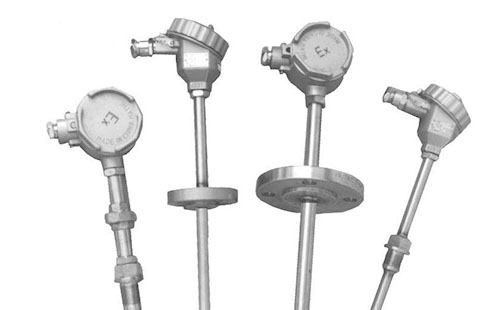
 Industrial Thermocouples How to Select the Right Thermocouple
Industrial Thermocouples How to Select the Right Thermocouple
Industrial thermocouple - select the correct thermocouple. Question "What kind of thermocouple?" The answer depends on several factors related to the process to be monitored, such as its compatibility with the media/process environment, the frequency and accuracy of measurements required, and the regulatory environment in your industry.
From refining to pharmacy, temperature measurement is a key parameter in manufacturing and processing operations in many industries. Accurate temperature monitoring helps ensure safe, efficient and optimal results. Nowadays, the two most common industrial temperature measurement technologies are resistance temperature detector (RTD) and thermocouple Each has its advantages and disadvantages. Thermocouples are relatively inexpensive, rugged, fast response time, and can measure media up to 2300 ° C (RTD temperature sensors are only suitable for temperatures up to 850 ° C). However, thermocouples are not as accurate as RTDs (their accuracy will decrease over time), and their output is non-linear. RTD temperature sensors provide higher accuracy, repeatability and stability, but their response time is slower and more expensive than thermocouples.
Industrial thermocouples - Selection criteria
Thermocouples are almost always the preferred measuring instrument for applications above 800 – 900 ° C. However, selecting an ideal industrial thermocouple requires some knowledge about the use of the instrument.
First, consider whether the thermocouple is in direct contact with the process or integrated into the thermowell assembly. Thermowells protect thermocouples from corrosive, rapidly flowing, or extremely hot process media. Today, 75% to 80% of industrial thermocouples installed in the oil and gas, oil refining, petrochemical, power generation, and pulp and paper industries use thermowell components. The second decision is materials. Most industrial thermocouples are made of stainless steel, but some applications require special alloys. Note that thermocouples for high temperature applications use special ceramic thermowells to insulate the wires in the instrument assembly. Next, determine if you need traditional industrial thermocouple assemblies or flexible thermocouple sensors for narrow or difficult to reach locations. Finally, you must decide the type of industrial thermocouple you want. Different metals have different temperature ranges and other characteristics that make them suitable or unsuitable for specific applications.
Industrial thermocouple type
Villian offers eight types of thermocouples. The main criteria for deciding which to use depend on the characteristics of the medium to which the instrument will be exposed and the temperature of the application.
Type K NiCr NiAl thermocouples typically used in oxidizing or inert gas environments up to 1200 ° C, 2200 ° F (ASTM E230: 1260 ° C, 2300 ° F).
Type J Fe CuNi thermocouples typically used in vacuum applications, oxidation and reduction atmospheres, or inert gas atmospheres for temperature measurements up to 750 ° C, 1380 ° F (ASTM E230: 760 ° C, 1400 ° F).
Type N NiCrSi NiSi thermocouples are typically used in oxidizing atmospheres, inert gas atmospheres, or dry reducing atmospheres up to 1200 ° C, 2200 ° F (ASTM E230: 1260 ° C, 2300 ° F). Type N thermocouple is very accurate at high temperature; They are often used to replace K-type thermocouples in applications that require longer service life and higher stability.
Type E NiCr CuNi thermocouples typically used in oxidizing or inert gas environments up to 900 ° C, 1650 ° F (ASTM E230: 870 ° C, 1600 ° F).
Type T Cu CuNi thermocouples - Typically used at temperatures below 0 ° C, 32 ° F, with an upper limit of 350 ° C, 660 ° F (ASTM E230: 370 ° C, 700 ° F) for oxidation, reduction, or inert gas atmospheres. These thermocouples have strong corrosion resistance even in humid environments.
R. Types S and B are precious metal thermocouples, commonly used for high temperature applications. Type R and S are also used for some special applications due to their high accuracy and stability.

